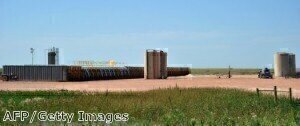Measurement and Testing
What is Hydraulic Fracturing?
Jul 07 2014
Hydraulic Fracturing, more commonly known as ‘Fracking’, is a gas mining process widely used within the United States. In fact, it’s used in nine out ten natural gas wells in the US. The process allows natural gas from underground wells to be collected and distributed to markets.
Fracking should not be mistaken for drilling, although this does occur before the process of Fracking can take place. While this method of mining is frequently successful, it can pose dangers to all those involved.
How Does the Process Work?
Enormous amounts of sand, water and chemicals are pumped into drilled wells measuring up to 10,000 feet below the surface. The force of this mixture breaks apart layers of rock, creating fractures that allow natural oil and gas to flow to the surface.
Since the wells have links to the main water supplies measures must be taken to prevent contamination. Contamination is possible from both the fluid being pumped into the well and the mined oil and gas. To avoid this, casings are inserted into the wells and cement is poured between these casings and the drilled holes. After the cement has dried, the drilling can continue. The use of such casings means the water supply remains uncontaminated throughout the entire Fracking process. You can learn more about this by reading the article: The Proliferation of Crude by Rail and its Impacts.
The Dangers of Fracking
The Fracking process uses 1.8 million gallons of water each and every time. This water is mixed with sand and 40,000 gallons of chemicals before it is injected into the wells. Dangerous toxins such as mercury, hydrochloric acid, formaldehyde and methanol are used to make the fluid that creates the fractures in the rock. Any given well can be ‘fracked’ up to 18 times which means the amount of chemicals found at one site is unimaginable.
Despite the measures taken, it’s practically impossible to stop all of these chemicals from seeping into the water supply. Drinking water for nearby towns and cities is seventeen times more likely to be contaminated with Methane when compared to areas that aren’t located close to a well. In addition, up to 70% of the fracturing fluid is left behind when a well has been used to full capacity, which is then left in open air pits to evaporate into the atmosphere.
As you can see there are many pros and cons to Hydraulic Fracturing, some of them quite extreme. You can read more about the views concerning this process by taking a look at the article: “Fracking: The Debate on Hydraulic Fracturing” for Gas to be Held May 19th in London.
Digital Edition
PIN 25.1 Feb/March
March 2024
In This Edition Safety - The technology behind the ION Science Tiger XT - Safety with ammonia and LOHCs as hydrogen carriers Analytical Instrumentation - Discussion on new tribology te...
View all digital editions
Events
Apr 22 2024 Hannover, Germany
Apr 22 2024 Marrakech, Morroco
Apr 22 2024 Muscat, Oman
Apr 22 2024 Rotterdam, Netherlands
Apr 23 2024 Singapore


















